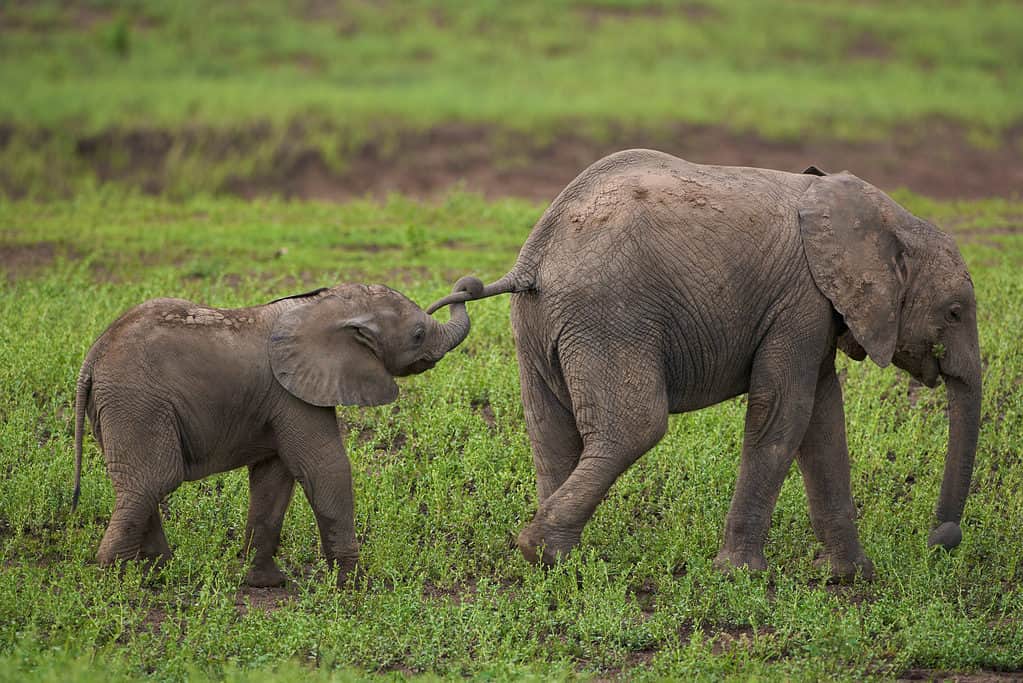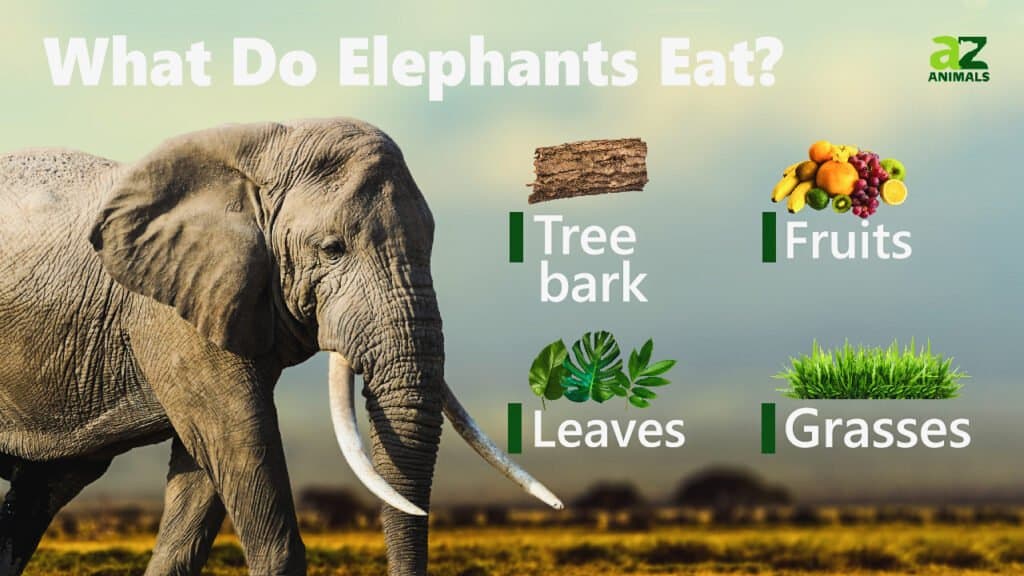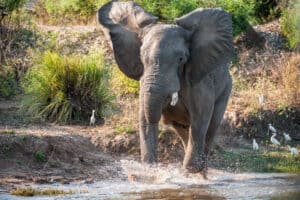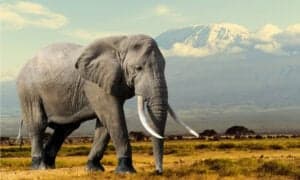Clever elephant! This gentle giant has worked out where the bananas are. Scroll below to watch the full video of this amazing creature grab a snack from a bus and nearly squash the bus driver in the process!
Watch This Elephant Attempt to Steal Bananas From a Bus
Where Do Asian Elephants Live?

Elephants travel in family groups with babies holding their mother’s tails like a human child holds hands.
©Johan W. Elzenga/Shutterstock.com
Asian elephants are the largest land mammals on the Asian continent but are smaller than the African elephant. They are found in the highest numbers in forested regions of India. There are actually three subspecies of Asian elephants which live in different locations. These are the Sri Lankan elephant which lives in Sri Lanka, the Sumatran elephant which lives in Sumatra and the Indian elephant which has the largest range on mainland Asia. In terms of habitat, these elephants prefer forested areas with some grassland and access to water.
What Do Asian Elephants Usually Eat?

These elephants are herbivores and are both browsers and grazers. This means that they feed on shrubs and trees and can also graze on grass. Their diet is mainly made up of roots, tree bark, and grass. They are large animals and need a lot of food! So, a single elephant can consume 300 pounds of food in a day. In fact, they spend over three-quarters of their life eating. The food they eat is low-quality forage and a lot of it passes straight through their intestines. It’s no surprise, therefore, that they poop between 15 and 20 times a day!
They shift their feeding pattern with the season. So, during the dry season, they mainly browse. Then, they change to grazing grass during the wet season. After the heavy rain, the grass is less nutritious so they switch back to browsing. Some elephants have developed a taste for bananas and sugar cane as we see in this clip.
What Is a Trunk Actually?

Elephants use their trunks for breathing, lifting, smelling, spraying, tasting, and showing affection.
©Nuttaya Maneekhot/Shutterstock.com
This elephant is showing off remarkable dexterity with its trunk. The scientific term for a trunk is actually proboscis which means ‘before the mouth’ in Greek. It is formed by a fusion of the nose and upper lip and is controlled by up to 150,000 muscle units!
The trunk is used for breathing (70% of inhaled air comes through the trunk) and drinking – by transferring water to the mouth. It is also used for lifting, smelling, spraying things, tasting, and detecting vibrations. Trunks are also very good at pinching bananas!
The photo featured at the top of this post is © iStock.com/Anolis01
Thank you for reading! Have some feedback for us? Contact the AZ Animals editorial team.







